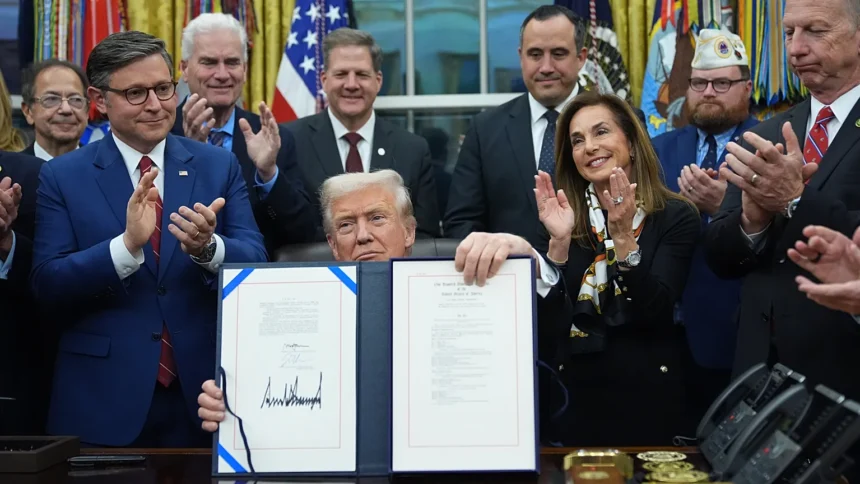President Donald Trump signed a funding bill late Wednesday, officially ending the longest federal government shutdown in U.S. history, which had lasted for 35 days.
The measure, passed earlier in the evening by the House of Representatives in a 222–209 vote, will keep the government running through the end of January.
“The Democrats tried to extort our country,” Trump said from the Oval Office before signing the legislation, surrounded by Republican leaders. “People were hurt so badly… We can never let this happen again.”
The president again urged the Senate to eliminate the filibuster rule, which requires 60 votes to pass most legislation — a rule he blames for repeated budget impasses.
Although Trump declined to take questions after signing the bill, reporters called out about newly released documents related to his late acquaintance Jeffrey Epstein, which he ignored. Trump has repeatedly denied any knowledge of Epstein’s crimes.
What the Bill Does
The legislation restores funding for all federal agencies, guarantees back pay for more than 1 million furloughed employees, and resumes programs disrupted by the shutdown — including SNAP, which provides food assistance to 42 million Americans.
The shutdown, which began on October 1, was triggered by a standoff in the Senate, where Democrats refused to support any funding measure that did not extend enhanced Affordable Care Act (ACA) tax credits.
After weeks of negotiations, a compromise emerged: Republicans agreed to let Democrats bring their own ACA subsidy bill to a vote in December, while Democrats allowed the stopgap funding bill to advance.
Without renewed ACA tax credits, millions could face higher health insurance premiums next year.
“Some families could see their monthly premiums double or even triple,” warned Rep. Rosa DeLauro (D-Conn.) during debate on the House floor.
Republicans, however, accused Democrats of dragging out the shutdown for political reasons.
“We tried more than a month ago to keep the government open,” said House Majority Leader Steve Scalise (R-La.). “Instead, Democrats chose to keep it closed — and millions of Americans suffered for it.”
The Office of Management and Budget instructed federal employees to return to work on Thursday, while the Department of Transportation froze planned flight reductions that had been introduced amid an air traffic controller shortage.
As of Tuesday, 6% of U.S. flights had been cancelled, a number that was projected to climb to 10% by Friday if the shutdown had continued.
The Supreme Court, which had delayed a ruling over SNAP payments to give Congress time to act, is now expected to drop the case following the bill’s passage.
While the stopgap deal brings relief to federal workers and the public, it only funds the government on a temporary basis. Lawmakers now face another looming deadline at the end of January, when they must reach a longer-term budget agreement or risk repeating the same crisis.





